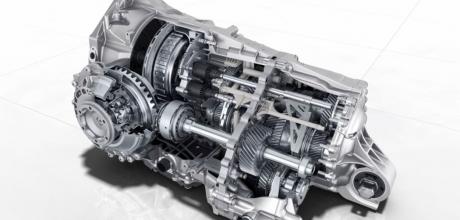Technology explained Porsche PDK

Porsche Doppelkupplungsgetriebe has outsold them manual gearbox in 911s for the past 10 years…
The use of automatic gearboxes in cars predates Porsche by almost 50 years – an unkind person might say that many automatic gearboxes drove like they did.
Not so with Porsche’s Doppelkupplingsgetriebe, or PDK for short. The double compound German name means Porsche double-clutch gearbox, and to many people – this writer included – it was the first automatic gearbox that drove as you’d expect one to.
Porsche’s idea for one stretches back over 40 years, when technical manager Rainer Wüst was given the challenge to manufacture an automatic gearbox. His idea was “to combine the best of two worlds: the advantages in the degree of efficiency of a manual transmission; and the potential for performance of full automation, which still had many weaknesses at the time,” Rainer recalls today. His solution involved returning to a previous dual-clutch gearbox idea, tested by Imre Szodfridt. At the end of the 1960s Imre pitched the idea of a dual-clutch gearbox to Ferndand Piëch, Porsche’s head of development. It was those original gearboxes that Rainer dug out of the backrooms, then fashioned pneumatic valves to work hydraulically, in striving to push the concept further.
The end result went into a 944 Turbo in the 1980s, and combined two gearboxes in one, each with its own clutch so that when one gear was selected, the next gear is already engaged. Closing the clutch in use and opening the next gave instantaneous gear changes. Racing use beckoned, and PDK was first used in the 962 at Monza in 1986.
The 911 had to wait until 2008 for PDK, after sister company VW had been the first to offer it on the market. Now, the same ‘two gearboxes in one’ idea works by two concentric wet clutches: one 202mm and a smaller, inner one measuring 153mm, each operating its own shaft. The outer shaft operates 2nd, 4th and 6th gears, the inner operates the odd number gears, and reverse. With one gear selected on one shaft, the next gear is pre-selected on the other shaft. ECU-controlled electro-hydraulic actuators shift between clutches in less than 100 milliseconds, when accelerating or decelerating, based on various metrics measured around the car and if the car is in Sport Chrono or Sport Chrono Plus mode, where more aggressive changes occur.
It’s a devastatingly effective system, and the fascinating 40-year development is one that’s rich both in Porsche history and names.

